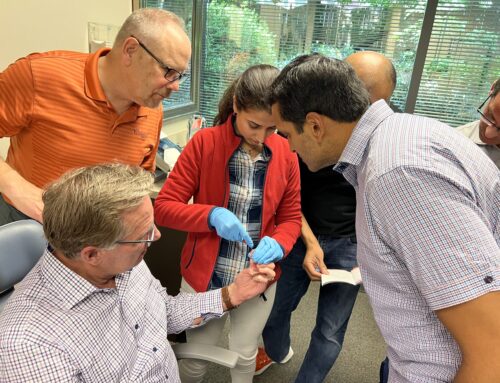TMD is a painful condition that can worsen when eating the wrong foods. With the holidays just around the corner that often means there will be lots of different food for your patients to choose from! This is also the time of year where many people will eat more food than they normally eat during the year—and it is often food that they don’t typically eat other times. To help your patients protect their jaws and prevent pain, here is a list of diet changes that might help improve their TMD symptoms this Thanksgiving:
Skip the Crunchy and Chewy
When at the dinner table, there might be a lot of crunchy and chewy foods to choose from this holiday season, but it is important to urge your patients not to do it. Many crunchy foods, such as hard, crusty breads and crackers, can put a lot of strain on a person’s jaw. Additionally, chewy can also worsen TMD pain in patients. This is because chewy foods tend to be sweet, enjoyable treats that might be hard to avoid. While it may be difficult to pass on gum, caramel and gummy candy, it might be a sacrifice patients need to take for improved TMJ health this season.
Take Smaller Bites
Patients might also be tempted to eating everything in sight without chewing it all the way through, but remind them to be patient. Large foods that require opening the mouth wide such as corn-on-the-cob and whole apples can overextend the jaw and ultimately cause pain for a TMD sufferer. Even large sandwiches and burgers can overextend the jaw. Instead, patients should try using a fork and knife to cut food into smaller pieces that are easier to eat.
Choose Vegetables
Lastly, when it comes to Thanksgiving dinner make sure to encourage your patients to say “Yes” to vegetables. However, make sure they choose wisely what veggies to eat. For instance, patients should avoid carrots because they are harder and can hurt their jaw. On the other hand, if the carrots are cooked, then they are soft enough to not hurt their jaw.
When something in the body is causing pain when it moves, it is best to minimize the movement of that body part. However, when it comes to jaw pain it is not that easy to do since we have to eat, and speak. However, patients can limit the amount of movement their jaw makes as to not use the muscles that are causing pain by choosing foods that do not require a lot of chewing, while also avoiding habits that make the muscles work.





